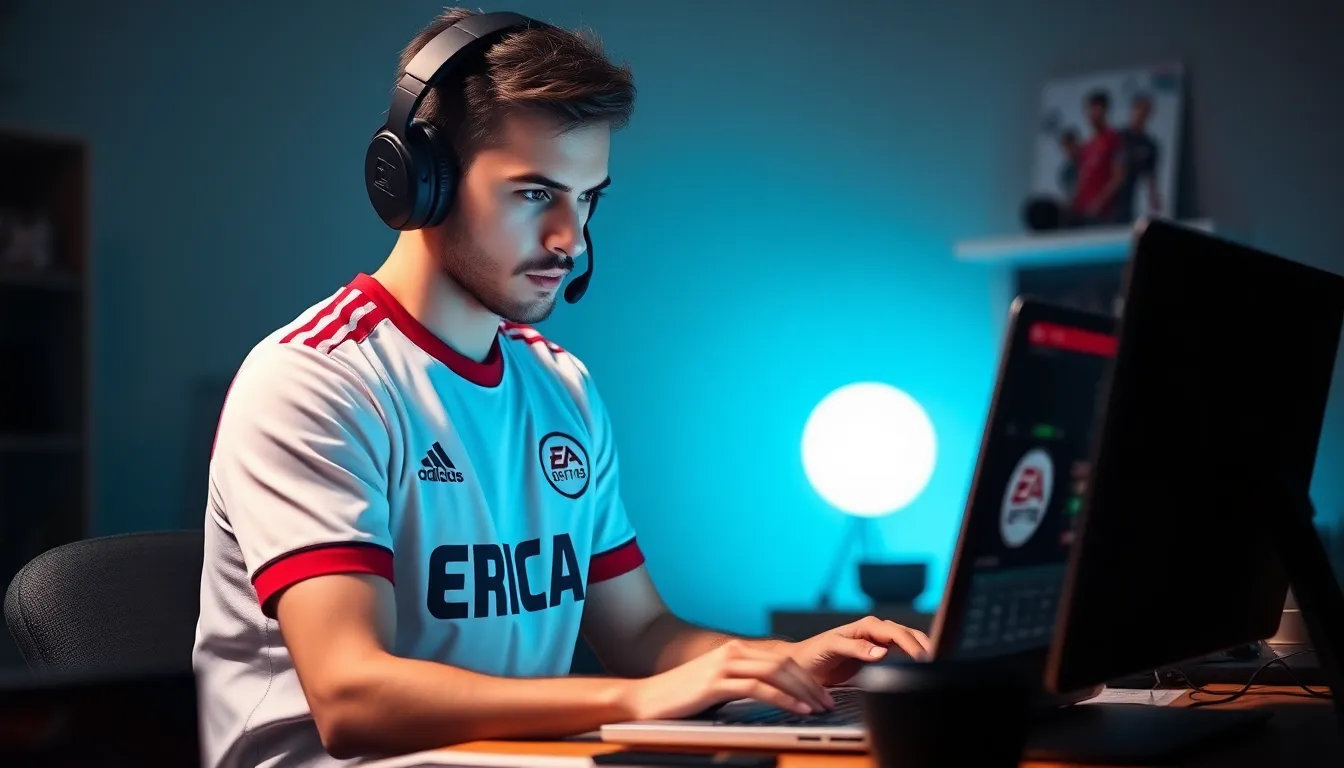Table of Contents
ToggleIn the world of FIFA, player comparisons are the ultimate showdown, like a friendly neighborhood barbecue where everyone debates who’s the real grill master. Whether it’s speed, skill, or that magical ability to score from impossible angles, fans love to pit their favorite players against each other. But let’s be honest—who doesn’t enjoy a good argument over stats and skills while munching on chips?
Overview of FIFA Player Comparison
FIFA player comparisons spark vibrant discussions among fans, showcasing the unique skills and attributes of their favorite athletes. Attributes such as speed, dribbling, and shooting prowess often become focal points in these debates. Recognizing the nuances in player performance allows fans to appreciate individual strengths and weaknesses.
Fans analyze statistics like goals per match, assists, and player ratings to bolster their arguments. These metrics provide a solid foundation for determining which player excels in various situations. Observing how different players perform in high-pressure scenarios adds another layer to the conversation.
Engagement in player comparisons fosters a sense of community. Gamers share insights on social media or forums, fueling debates and encouraging others to join the discourse. A diverse array of players from different leagues further enriches these discussions, as fans compare international stars with local talents.
Comparative tools within FIFA games enhance this experience. Utilizing features like player cards and in-game statistics provides fans with accurate data. Players’ traits, such as agility and strength, directly influence how successful they are in matches. Understanding these aspects enables a more informed comparison.
Ultimately, FIFA player comparisons exemplify the passion for soccer. The blend of statistics, personal preference, and expert analysis creates an engaging environment for fans. This practice not only highlights individual achievements but also keeps the enthusiasm for the game alive.
Key Metrics for Player Evaluation

Evaluating FIFA players involves examining various key metrics that highlight their strengths and weaknesses. These metrics provide valuable insights and often drive discussions among fans.
Skills Ratings
Skills ratings reflect a player’s technical capabilities in the game. Dribbling, shooting, and passing are crucial skills that impact gameplay. Higher ratings in these areas indicate proficiency that can significantly affect match outcomes. For instance, a player with a dribbling rating of 90 is likely to maneuver through defenses more effectively than one rated at 80. Skill ratings not only inform player comparisons but also assist gamers in making strategic decisions during matches.
Physical Attributes
Physical attributes are essential for performance on the field. Key aspects like speed, strength, and stamina play a significant role in a player’s effectiveness. For example, a player with high speed can outpace defenders, leading to scoring opportunities. Strength ratings can influence a player’s ability to hold off opponents, while stamina ratings impact endurance throughout the match. These factors contribute to how players are evaluated and compared in FIFA.
Performance Statistics
Performance statistics provide a quantitative basis for comparing players. Metrics such as goals per game, assists, and successful dribbles offer clear indicators of a player’s impact. A player averaging 1.5 goals per match stands out compared to others with lower averages. Analyzing assists also showcases a player’s playmaking abilities. Overall, these statistics form a critical part of player evaluation, enabling fans to engage in informed discussions about their favorites.
The Role of Player Comparison in FIFA Gaming
Player comparisons enrich the FIFA gaming experience, making matches more engaging and competitive. By evaluating attributes like speed and skill, players dive deeper into the game dynamics.
Enhancing Gameplay Experience
Enhancement of the gameplay experience occurs through thoughtful player comparisons. Gamers often relish the opportunity to assess attributes such as shooting accuracy and defensive skills. Engaging with these aspects boosts enjoyment and fosters intense rivalries among friends and online opponents. Enjoyment levels rise as players discover new tactics and strategies by exploring varied skills. Additionally, comparisons encourage players to experiment with different team formations, ultimately leading to a more dynamic and interactive experience.
Facilitating Strategy Development
Strategy development benefits significantly from player comparisons. Coaches and gamers analyze position-specific skill sets, assessing how attributes impact team performance across various scenarios. Identifying strengths and weaknesses helps in crafting game plans tailored to opposing players. Utilizing statistics such as assist rates and defensive prowess allows for informed decision-making. Furthermore, comparisons prompt players to adjust their tactics based on real-time performance data, fostering adaptability. Understanding the nuances of each player’s capabilities informs better gameplay strategies and enhances overall competition.
Popular Player Comparisons in FIFA
Player comparisons ignite discussions among fans, highlighting their favorite athletes’ strengths. Two primary categories often emerge: iconic players and emerging talents.
Iconic Players
Players like Lionel Messi and Cristiano Ronaldo frequently dominate comparisons. Each brings extraordinary skills to the field, with Messi’s dribbling abilities and Ronaldo’s powerful shots often pitted against one another. Statistical metrics reveal they possess impressive records, such as over 700 career goals each, providing data for robust debates. Fans consider attributes like playmaking and finishing when discussing these legends. Their unique playing styles further fuel the dialogue, as supporters passionately defend their choices. Iconic players capture the essence of FIFA, demonstrating how legendary performances influence the gaming experience.
Emerging Talents
Emerging talents like Jude Bellingham and Pedri receive attention for their potential impact. These young athletes display remarkable skills, often boasting attributes such as agility and vision. Bellingham’s goal contributions and Pedri’s passing accuracy stand out, making them notable in player comparisons. Young players often spark excitement, as fans visualize their future trajectories. By analyzing metrics like goals and assists, supporters evaluate their performances against seasoned professionals. In discussions about game strategy, emerging talents represent a fresh perspective, highlighting the evolution of soccer and its impact on FIFA gaming.
FIFA player comparisons ignite a thrilling dialogue among fans that transcends mere statistics. They celebrate the artistry of soccer while fostering community connections. Whether debating the prowess of legends or the potential of rising stars these discussions enrich the gaming experience.
As players analyze attributes and performance metrics they deepen their appreciation for the sport. This engagement not only enhances gameplay but also strengthens friendships through shared passions. Ultimately the excitement of comparing players keeps the spirit of soccer vibrant and alive in both real life and the virtual arena.




